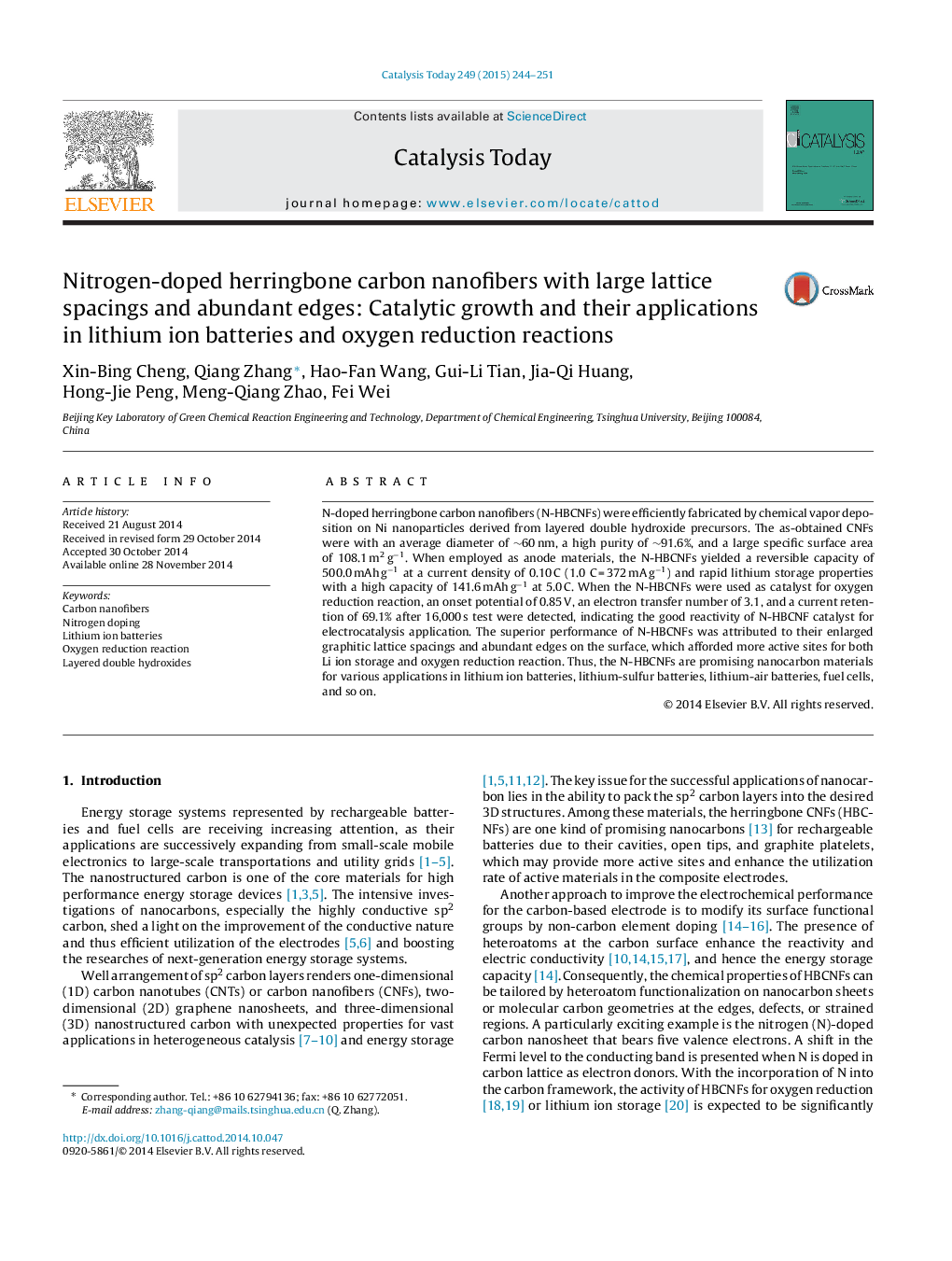| Article ID | Journal | Published Year | Pages | File Type |
|---|---|---|---|---|
| 53733 | Catalysis Today | 2015 | 8 Pages |
•Ni nanoparticles derived from layered double hydroxide precursors were employed as catalysts.•N-doped herringbone carbon nanofibers were efficiently fabricated by chemical vapor deposition.•N-doped carbon nanofibers yielded a high reversible capacity and rapid lithium storage properties.•N-doped carbon nanofibers afforded good activity for oxygen reduction reaction.
N-doped herringbone carbon nanofibers (N-HBCNFs) were efficiently fabricated by chemical vapor deposition on Ni nanoparticles derived from layered double hydroxide precursors. The as-obtained CNFs were with an average diameter of ∼60 nm, a high purity of ∼91.6%, and a large specific surface area of 108.1 m2 g−1. When employed as anode materials, the N-HBCNFs yielded a reversible capacity of 500.0 mAh g−1 at a current density of 0.10 C (1.0 C = 372 mA g−1) and rapid lithium storage properties with a high capacity of 141.6 mAh g−1 at 5.0 C. When the N-HBCNFs were used as catalyst for oxygen reduction reaction, an onset potential of 0.85 V, an electron transfer number of 3.1, and a current retention of 69.1% after 16,000 s test were detected, indicating the good reactivity of N-HBCNF catalyst for electrocatalysis application. The superior performance of N-HBCNFs was attributed to their enlarged graphitic lattice spacings and abundant edges on the surface, which afforded more active sites for both Li ion storage and oxygen reduction reaction. Thus, the N-HBCNFs are promising nanocarbon materials for various applications in lithium ion batteries, lithium-sulfur batteries, lithium-air batteries, fuel cells, and so on.
Graphical abstractFigure optionsDownload full-size imageDownload high-quality image (139 K)Download as PowerPoint slide
